The Difference Between Two-Stroke and Four-Stroke Engines.
Internal combustion engines convert chemical energy into the mechanical energy used to power a vehicle or other equipment via a combustion event requiring air, fuel and a source of ignition.
The terms two-cycle and two-stroke are often interchanged, as are four-cycle and four-stroke. Each upward or downward movement of pistons in the engine is called a stroke. The fundamental difference between two-stroke and four-stroke engines is how they introduce air and fuel for combustion to create power, then remove exhaust gases after each combustion cycle.
Four-Stroke Engine Chamber Design
A four-stroke engine uses intake and exhaust ports positioned at the top of the combustion chamber. Intake and exhaust valves control the opening and closing of the ports to manage incoming and exiting gases. The intake port controls the incoming air, providing air that reacts with the fuel when ignited. The exhaust port expels the resulting gases, including water vapor (H2O), carbon dioxide (CO2) and nitrogen (N2), out of the combustion chamber.
Four-Stroke Engine Combustion Cycle
A four-stroke engine requires two full revolutions of the crankshaft, thus four piston cycles, to complete the intake, compression, power and exhaust strokes. During the first revolution, the air-fuel mixture is drawn into the combustion chamber through the intake port and compressed. During the second revolution, the air-fuel mixture is ignited to create power and any resultant gases are released.
Four-stroke engines are more durable, fuel efficient and have lower emissions.
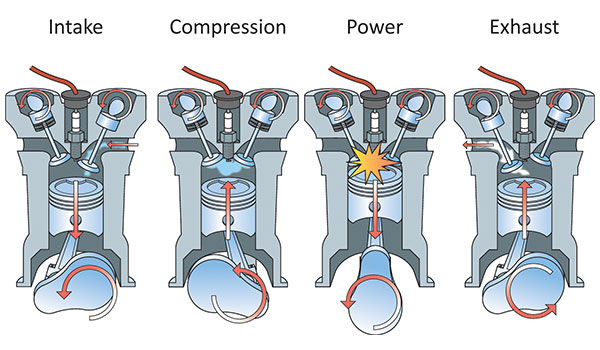
1. Intake stroke
As the piston moves down the cylinder, it creates a vacuum in the space above it and draws air into the cylinder through the open intake valve.
2. Compression stroke
The intake and exhaust valves are closed as the piston moves up and compresses the air-fuel mixture in preparation for combustion.
3. Power stroke
During the power stroke, both the intake and exhaust valves are closed as the spark plug ignites the mixture of air and fuel. The explosion forces the piston down, turning the crankshaft.
4. Exhaust stroke
As the piston travels up, it forces any gases remaining from the combustion cycle out through the open exhaust valve, preparing the cylinder for a fresh charge of air and fuel.
Two-Stroke Chamber Design
A two-stroke engine uses ports on either side of the piston to control the gases that enter and exit the cylinder. The moving piston covers and uncovers the ports, instead of using valves to open and close ports like a four-stroke engine.
Two-Stroke Engine Combustion Cycle
A two-stroke engine requires only one revolution of the crankshaft, thus two piston cycles, to complete the entire combustion event. The engine fires every time the crankshaft revolves, doubling the number of explosions compared to a four-stroke engine, which generates more power when comparing identically-sized cylinders.
Two-stroke engines are less expensive and lighter weight, providing higher power-to-weight ratios.
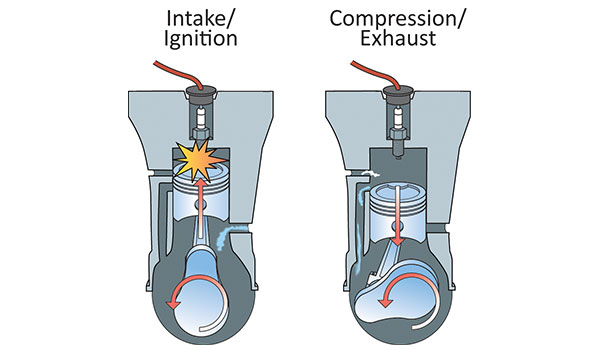
1. Intake-Ignition Stroke
The intake port opens as the piston moves up, which creates a vacuum in the space below the piston that forces air to rush into the crankcase. As the air travels through the carburetor, it picks up a dose of fuel and oil.
As the piston continues up, the air-fuel mixture already in the cylinder is compressed. As the piston reaches top-dead-center (TDC), the spark plug ignites, causing the air-fuel mixture to explode.
2. Compression-Exhaust Stroke
The piston is forced down by the explosion of the air-fuel mixture. The oil-fuel mixture in the crankcase is pressurized as the piston moves down and is forced through the transfer port into the cylinder. The incoming charge forces remaining gases in the cylinder to be released through the exhaust port.
Two-Stroke vs. Four-Stroke Applications
Advantages of two-stroke engines include being less expensive to build, lighter weight and they offer a higher power-to-weight ratio than four-stroke engines.
For these reasons, two-stroke engines are ideal in handheld applications like chainsaws, string trimmers and backpack blowers. Two-stroke dirt bikes are also making a comeback thanks to a more usable power band and new engine designs that reduce emissions. Two-stroke engines are also easier to start in cold temperatures, making them ideal for use in snowmobiles.
However, four-stroke engines produce more torque at lower rpm, generally have better durability than high-revving two-stroke engines and also provide improved fuel efficiency and lower emissions. For these reasons, four-stroke engines are ideal in applications such as motorcycles, ATV/UTV, marine motors and personal watercraft.


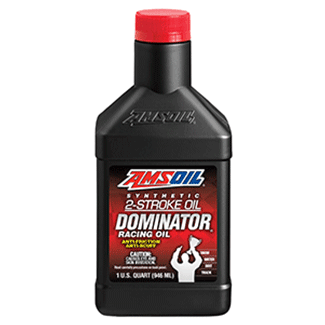
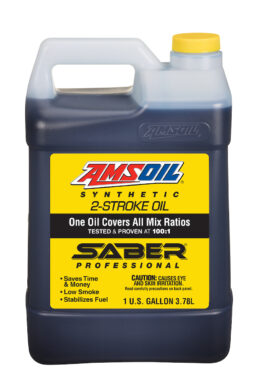
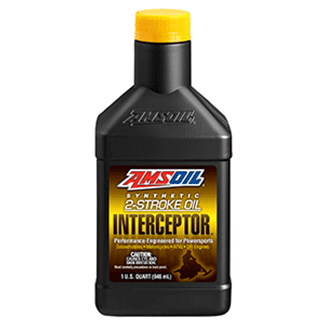

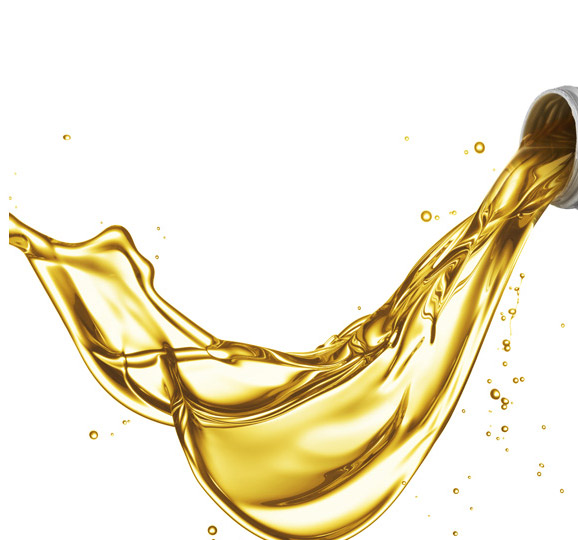



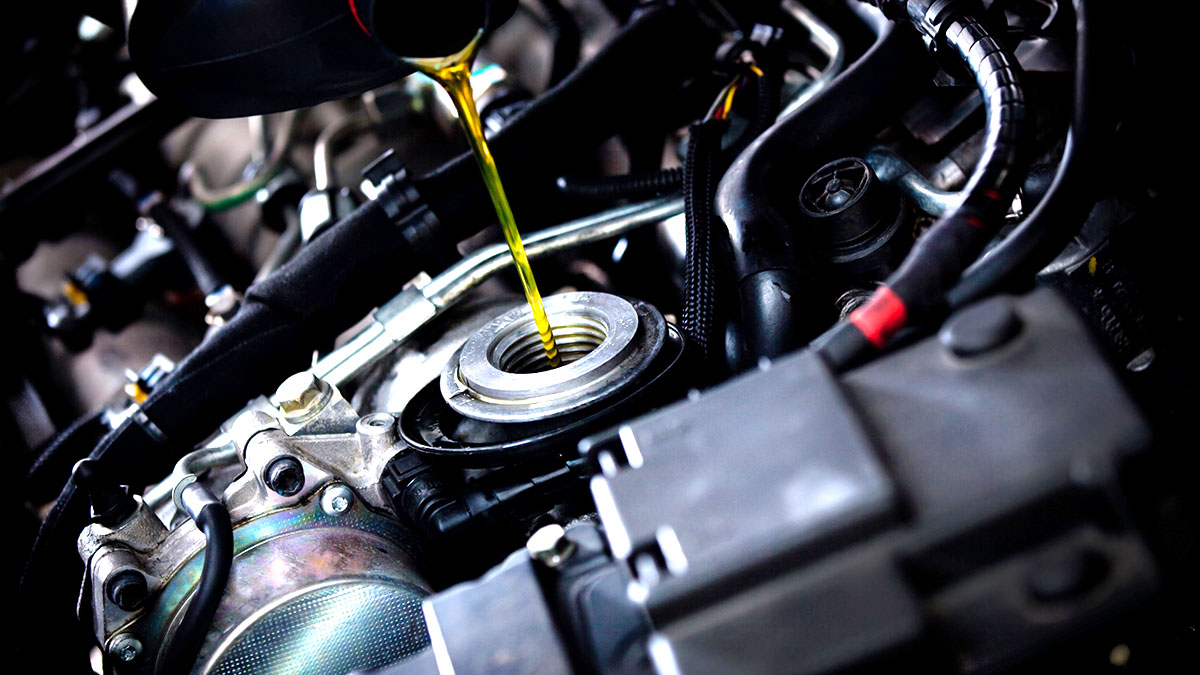
Comments
AMSOIL Technical Writer and 20-year veteran of the motorcycle industry. Enjoys tearing things apart to figure out how they work. If it can’t be repaired, it’s not worth owning.
Share: